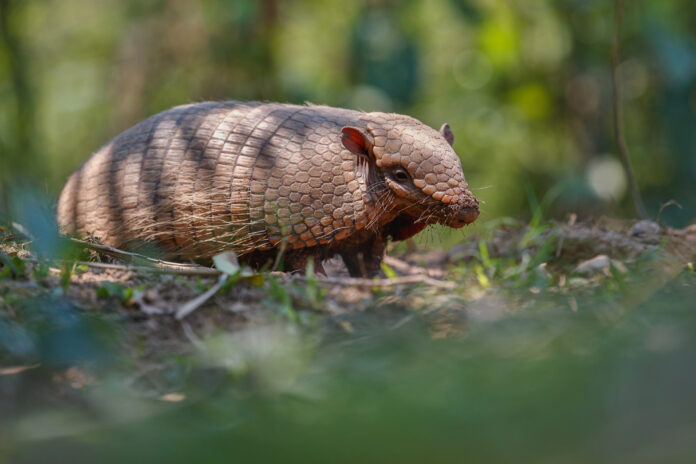Indian Pangolin
The Ultimate Guide to the Indian Pangolin: Nature’s Armored Insectivore
Outline
H1: Introduction
What is the Indian Pangolin?
Does understanding Indian Pangolins carry any importance?
H2: Species Overview
H3: Scientific Classification
H3: Physical Characteristics
H3: Unique Features of Pangolins
H2: Habitat and Distribution
H3: Where Do Indian Pangolins Live?
H3: Preferred Environment and Conditions
H2: Behavior and Lifestyle
H3: Nocturnal Habits
H3: Solitary Nature
H3: Defense Mechanisms
H2: Diet and Feeding Habits
H3: What Do They Eat?
The method through which Indian Pangolins locate their food sources serves as Topic 3 of this study.
H2: Reproduction and Lifecycle
H3: Mating Behavior
H3: Caring for the Young
H2: Importance in Ecosystem
H3: Role in Pest Control
H3: Impact on Soil Health
H2: Threats and Challenges
H3: Poaching and Illegal Trade
H3: Habitat Loss
H3: Misconceptions and Myths
H2: Conservation Status
H3: IUCN Red List
H3: Protection Laws and Wildlife Acts
H3: NGO and Government Initiatives
H2: Cultural Significance
H3: Pangolins in Indian Folklore
H3: Misuse in Traditional Medicine
H2: The Pangolin Trade
H3: Global vs. Local Demand
H3: Black Market Operations
The strategies to help save the Indian Pangolin will be discussed in this section.
H3: Support Conservation Efforts
H3: Report Illegal Activities
H2: Interesting Facts About Indian Pangolins
H2: Misunderstood Creatures
H3: Myths vs. Reality
H2: Future Outlook
H3: Can They Survive the Century?
H3: Hopes Through Awareness and Action
H2: Conclusion
H2: FAQs
5 unique and informative questions
The Ultimate Guide to the Indian Pangolin: Nature’s Armored Insectivore
Introduction
There exists within nature a rare animal which presents itself as a mobile pinecone form. Even though the Indian Pangolin stands in a more endangered position than both tigers and humans know about them little. This stealthy insectivore which has protective armor shelters beneath its scales provides essential services to our ecosystems. Nurtured by its ecological significance the Indian Pangolin keeps fighting to survive while still facing certain demise from illegal trading alongside habitat loss. Learn about this lesser-known marvel along with its survival significance that applies to everyone.
Species Overview
Scientific Classification
Scientific Name: Manis crassicaudata
Family: Manidae
Order: Pholidota
Common Name: Indian Pangolin
Among eight pangolin species which inhabit the Earth this species stands unique because it occurs exclusively in the Indian subcontinent.
Physical Characteristics
The entire body length and head region of Indian Pangolins receives protection from tough keratin scales that comprise human nails. They develop a total body length ranging from 75 cm and possess a tail matching the same measure.
Unique Features of Pangolins
Pangolins have no teeth. The long and sticky tongue extends beyond their body length to enable them to consume ants and termites effectively. And when threatened? Their defensive strategy involves curling into a ball-shaped mass which provides them complete protection against possible predators.
Habitat and Distribution
Where Do Indian Pangolins Live?
The presence of Indian Pangolins extends across several nations including India all the way to Sri Lanka as well as portions of Nepal and Bangladesh. Indian Pangolins adapt easily yet select forested locations alongside grasslands along with open brushlands for their dwellings.
Preferred Environment and Conditions
The Indian Pangolin dug deep burrows as heat and predator protection and chooses termite mound closeness for its settlement. Indian Pangolins remain quiet and evasive because they spend most of their time during nighttime hours.
Behavior and Lifestyle
Nocturnal Habits
The nocturnal nature defines the Indian Pangolin as an evening species. Under the protection of nightfall the animal uses its claw system to excavate below termite mounds which serves as protection from both predators and human observers.
Solitary Nature
Pangolins stay by themselves because they avoid social interactions with others. Pangolins exist separately from one another except for mating periods. All individuals seek separate regions for their exclusive domain.
Defense Mechanisms
The Indian Pangolin creates an armor shield by rolling up while also using its tail to strike and produce bad scents against threats in the same way as an armored skunk.
Diet and Feeding Habits
What Do They Eat?
The food selection at their place consists of ants and termites. The annual insect consumption of a single pangolin reaches more than 70 million individuals which provides valuable pest control services to nature.
How Do They Find Their Food?
The sharp perception of smell in pangolins enables them to detect ant and termite underground colonies. Their well-developed forelimbs fitted with tightly curved claws enable them to break into nests easily.
Reproduction and Lifecycle
Mating Behavior
The mating process takes place just one time per year. When looking for females male pangolins can detect females through scent trails. Following their quick temporary relationship the two individuals separate.
Caring for the Young
The pangolin female births only one offspring at a time. Throughout the three months of infancy the baby pangolin stays bound to its mother’s tail before it learns to survive on its own.
Importance in Ecosystem
Role in Pest Control
Pangolins protect forest trees and crops by consuming ants together with termites in their diet. Pangolins act as free pest controllers which provide environmental benefits to their habitat.
Impact on Soil Health
The dug-up soil benefits from their digging activity which enhances quality and structure—an earthworm-like process that is much more interesting.
Threats and Challenges
Poaching and Illegal Trade
Asian regions place high demand on pangolin scales to be used as treatment in traditional medicine. The excessive market demand has resulted in mass killing activities.
Habitat Loss
The reduction of their natural habitat through urbanization and deforestation together with farming activities has left pangolins exceptionally exposed to threats.
Misconceptions and Myths
Pangolin scales are thought to possess miraculous healing properties by certain people. Spoiler alert: they don’t. These scales share similar biochemical composition with your fingernails as well as with the main material that makes up human hair.
Conservation Status
IUCN Red List
According to the International Union for Conservation of Nature (IUCN) the Endangered status applies to the Indian Pangolin.
Protection Laws and Wildlife Acts
The Wildlife Protection Act of 1972 in India through Schedule I protects pangolin making all acts of hunting and trading against the law.
NGO and Government Initiatives
The rescue operations of Wildlife Trust of India and TRAFFIC India aim to save pangolins followed by their rehabilitation and public enlightenment campaign.
Cultural Significance
Pangolins in Indian Folklore
Certain stories from rural communities portray the pangolin as a magical animal while treating it as a mythical creature. The wrongful interpretations from traditional stories usually lead to pangolins becoming victims of abuse.
Misuse in Traditional Medicine
Traditional medicine continues using nonexistent proof-based pangolin scales in remedies although they have no proven benefits for asthma or arthritis.
The Pangolin Trade
Global vs. Local Demand
The majority of Indian pangolins ends up on black markets of China and Southeast Asia because their products remain desirable in those regions.
Black Market Operations
Poaching activities take place in remote regions where some rural dwellers continue working without realizing the penalties and environmental repercussions of their actions.
Multiple efforts can assist the protection of Indian Pangolins.
Support Conservation Efforts
Contribute funds to NGOs or raise awareness or provide your time as a volunteer so far as your availability permits. Every small step matters.
Report Illegal Activities
You should immediately notify forest officials or wildlife helplines whenever you spot pangolin poaching or trade in progress. Be the voice they don’t have.
FAQs
1. Are Indian Pangolins dangerous to humans?
Nope! They’re shy, non-aggressive, and prefer to avoid human contact altogether.
2. Why are pangolin scales so valuable?
Unfortunately, many believe they have medicinal properties—despite zero scientific proof. This myth fuels illegal trade.
3. Can pangolins be kept as pets?
Absolutely not. They have specialized diets and are protected by law.
4. How many Indian Pangolins are left in the wild?
Exact numbers are unclear due to their secretive nature, but populations are rapidly declining.
5. What should I do if I see someone trading pangolins?
Report immediately to local wildlife authorities or forest departments. Your action could save a life.
Please don’t forget to leave a review.

